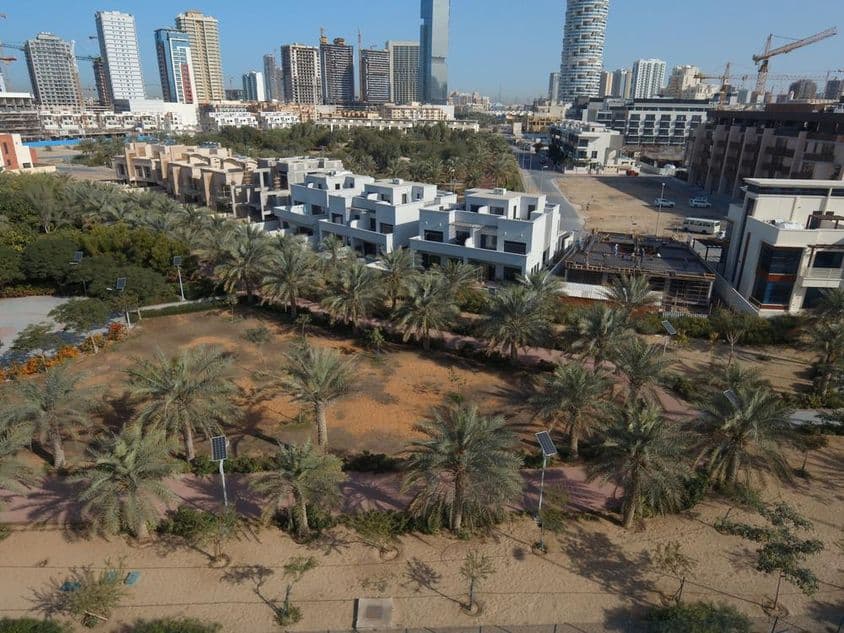Mixed-Use Communities Boom in UAE Real Estate

Why Are Mixed-Use Communities More Profitable in the UAE?
The UAE's real estate market is undergoing continuous transformation. Investors and developers are increasingly turning their attention towards so-called mixed-use communities, which have delivered exceptional returns in recent years. Mixed-use developments integrate residential, commercial, and leisure functions, functioning as a single cohesive community. These developments not only offer convenience and quality of life to tenants and homeowners but also provide significant benefits for investors in terms of rental yields and capital appreciation.
Comparison of Rental Yields
According to the latest data, mixed-use communities have generated an average rental yield of 8% for the year so far, compared to 7% for master-planned communities and 5% for standalone residential buildings. This data alone illustrates the superior profitability and momentum of mixed-use developments.
The reason is simple: integrated developments—offering housing, shops, offices, and entertainment options—are more attractive to residents, particularly those seeking a convenient lifestyle and short commutes. Well-designed communities that provide direct access to services, restaurants, gyms, or even workplaces generate higher rental demand, leading to higher rental prices.
The Power of Rental Premiums and Stable Demand
Rental prices in these communities can exceed those in similar-sized but less integrated environments by as much as 20–25%. Demand for such communities is not only strong but also stable, having remained balanced throughout 2025. The greatest interest is observed for smaller, one- or two-bedroom apartments, as they offer both affordability and lifestyle-oriented convenience.
Capital Appreciation Considerations
While mixed-use developments lead in rental yields, standalone residential buildings slightly outperform them in terms of capital appreciation. Standalone residential projects' prices increased by an average of 16% between January and October 2025, compared to 15% for mixed-use communities. This marginal difference highlights that mixed-use developments can maintain a balance: they offer high rental yields while also ensuring stable property value growth.
New Motivations in Housing Purchase Decisions
The UAE housing market is increasingly shifting towards genuine needs and usage-based purchases. The residential segment with monthly incomes between 20,000–40,000 dirhams accounts for nearly 30% of all mortgage applications, and 81% of these buyers are purchasing homes for personal use, not as investments. This indicates that more buyers are seeking long-term, livable communities with accessible amenities over speculative purchases.
Advantages for Investors
Mixed-use developments appeal not only to tenants but also to long-term investors. These properties offer favorable ROI (return on investment) due to the diversity of projects and a stable tenant base. While standalone buildings can be attractive in the short term, mixed-use communities reliably perform better in the long term.
Such developments typically achieve higher rental and sales prices, as tenants are willing to pay more for a convenient lifestyle—whether it's proximity to their workplace or easy access to essential services.
The Advantage of Diversification During Crises
Thanks to diversified functions, these communities are more resistant to market fluctuations. For example, if housing rental demand decreases, commercial or office functions may still perform well, ensuring stable income streams for the entire project.
Additionally, integrated communities are more cost-efficient to operate: shared infrastructure—such as district cooling, centralized security systems, and maintenance—reduces operational costs, further improving investment returns.
Dubai's Vision: Livable Mini-Cities
Mixed-use developments represent not just a trend but also a long-term direction in the UAE's urban development strategy. Dubai's 2040 Urban Master Plan, for instance, specifically supports walkable, integrated communities where people can reach their workplaces, shops, cafes, or even gyms on foot. This strategy facilitates the emergence of self-sustaining neighborhoods that are more livable and sustainable.
It's no coincidence that developers from Abu Dhabi to Dubai, and even in the Northern Emirates, are increasingly launching such projects. The results speak for themselves: higher occupancy rates, longer rental cycles, and lower vacancy rates.
What About Standalone Buildings?
While the advance of mixed-use developments is notable, standalone buildings will not entirely disappear. They continue to play a critical role due to faster and cheaper execution and lower maintenance costs. The market's diversity necessitates space for both types.
Summary
Mixed-use communities are the new stars of the UAE real estate market. They offer higher rental yields, greater demand, and longer-term stability for both residents and investors. These livable, multifunctional communities not only provide comfort and quality of life but also efficient operation and more resilient profitability in crises. Anyone thinking long-term should certainly keep an eye on or even participate in such developments—as the cities of the future are already being built.
(The article is based on Property Finder and other industry expert opinions.)
If you find any errors on this page, please let us know via email.


